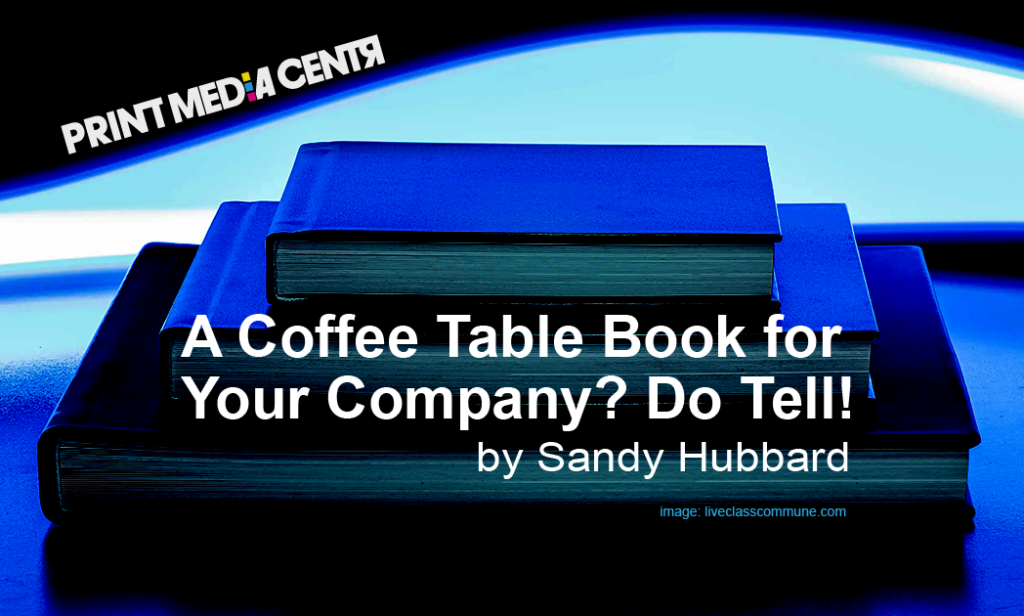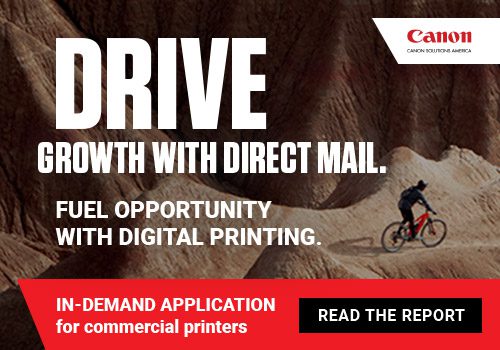
Your business deserves the very best treatment in telling its story. Elevate it with print!
Here’s why, and I believe this with all my heart: Print makes stories memorable. It gives ideas stature.
Statistically, most of us have written carefully-crafted information about our companies. Yet it resides only on our websites! Why? What if you committed it to print?
Here’s an idea that we discussed at #PrintChat, and I think it’s brilliant.
Publish a coffee table book that is the print version of your “About Us” company page.
If you’d like your book to be more than a vanity project, it’s worth thinking about the best way to present such a book and how to make it a professional product.
How do you get started with a coffee table book about your company?
As with any book for a targeted audience, we start with the first question: Who will be the audience for your coffee table book, and what are the characteristics of those readers?
Make a list of people who would advocate for you once they read the book. Who would benefit from understanding more about your business?
Ideas: Current and future customers, your strategic partners and vendors, community bigwigs… and your employees.
When you tell your company story so employees get a better picture, they internalize the story and retell it.
For example, my former employer created a beautiful company book that included the founder’s story. It described his modest start. This telling of the company history helped me understand the bootstrap origins of our large, successful publishing company. It also explained why we focused on operational efficiency and strategic, synergistic acquisitions. I became a better advocate for our company after reading the book.
For your own company, think about the unique elements of your business and how you serve your customers in ways that people may not know.
Continuing with the example of my former company, readers would be surprised that our corporation owned over 60 companies and divisions across multiple states during the time I worked there. We kept our mom-and-pop appeal despite the variety of holdings. The scope of our company was something I was proud of because I had helped many managers with integration after acquisition.
Next, list the “characters” in your coffee table book. How will you introduce them to the reader?
Everyone thinks of the company brass when it comes to a corporate history. But if you want to do something more impactful, consider the other people throughout the organization. I like to include people who don’t look exactly like the boss. This cross-section shows your diversity, making for more exciting photos and stories. You may want to have a customer as a profile. Doing so makes your presentation more well-rounded, just as when you add a testimonial page on your website.
Next, consider how you will convey your company story. A timeline version? A simple story that illustrates? Vignettes?
My former company did a chronological treatment and included profiles and photos of division managers (including yours truly). I was excited to share copies with my customers. Next, assuming you add photos or images, how will you choose which ones to highlight? Someone in the company is probably the keeper of these assets. Because it’s easy to get distracted by photos and memorabilia, you can hire a personal historian or business biographer to help you choose images that reflect well on the company and tell the proper story.
Now, here is the fun part!
Thinking of your reader, what would be an unusual or impressive way to print and bind your coffee table book?
There are hundreds of ways to create a book to give it more personality or stature. Maybe you are a high-gloss, perfect bound kind of company. Perhaps you are a case-bound multiple editions kind of business. Or it could be that you are the kind of company that comes across best on uncoated stock with earthy images and purpose-driven messaging.
One way to help with this choice is to imagine if a customer walked past your book on a coffee table in your lobby. What would catch their eye and draw them to pick it up?
Another approach is to think about your employees. If you printed such a book for every employee, what would the type of book they would display on their home coffee table?
You can see how powerful it can be to turn a company story into a valuable printed heirloom.
Use print to enhance your story!
##
Last month’s post by Sandy: https://printmediacentr.com/is-it-the-right-time-to-sell-your-print-business/
See all of Sandy’s posts here.
 Sandy Hubbard is a relentless advocate for the power of print. As a Marketing Strategist and Consultant, she helps printers develop a strong cross-channel marketing program to catch the attention of new customers. You can find Sandy Hubbard every Wednesday co-hosting #PrintChat on LinkedIn with Print Media Centr’s Deborah Corn. Join the group here.
Sandy Hubbard is a relentless advocate for the power of print. As a Marketing Strategist and Consultant, she helps printers develop a strong cross-channel marketing program to catch the attention of new customers. You can find Sandy Hubbard every Wednesday co-hosting #PrintChat on LinkedIn with Print Media Centr’s Deborah Corn. Join the group here.












